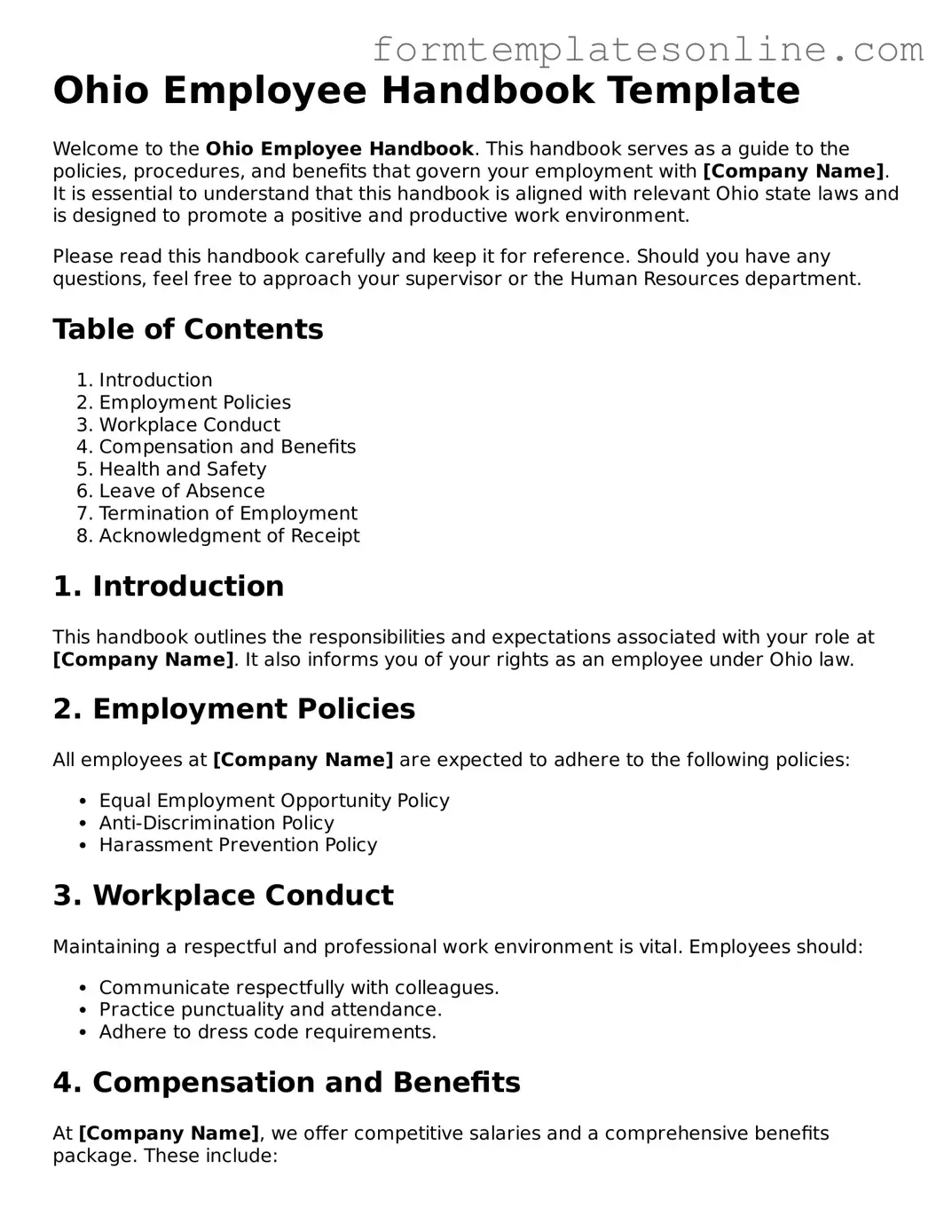Ohio Employee Handbook Template
Welcome to the Ohio Employee Handbook. This handbook serves as a guide to the policies, procedures, and benefits that govern your employment with [Company Name]. It is essential to understand that this handbook is aligned with relevant Ohio state laws and is designed to promote a positive and productive work environment.
Please read this handbook carefully and keep it for reference. Should you have any questions, feel free to approach your supervisor or the Human Resources department.
Table of Contents
- Introduction
- Employment Policies
- Workplace Conduct
- Compensation and Benefits
- Health and Safety
- Leave of Absence
- Termination of Employment
- Acknowledgment of Receipt
1. Introduction
This handbook outlines the responsibilities and expectations associated with your role at [Company Name]. It also informs you of your rights as an employee under Ohio law.
2. Employment Policies
All employees at [Company Name] are expected to adhere to the following policies:
- Equal Employment Opportunity Policy
- Anti-Discrimination Policy
- Harassment Prevention Policy
3. Workplace Conduct
Maintaining a respectful and professional work environment is vital. Employees should:
- Communicate respectfully with colleagues.
- Practice punctuality and attendance.
- Adhere to dress code requirements.
4. Compensation and Benefits
At [Company Name], we offer competitive salaries and a comprehensive benefits package. These include:
- Health insurance options.
- Retirement savings plans.
- Paid time off policies.
5. Health and Safety
Your safety is our priority. Adhere to the following safety guidelines:
- Report any unsafe conditions immediately.
- Participate in safety training sessions.
- Follow all health protocols established by the company.
6. Leave of Absence
Employees may request leave under the following situations:
- Family Medical Leave Act (FMLA).
- Personal or medical emergencies.
- Bereavement leave.
7. Termination of Employment
Termination can occur under several circumstances, including:
- Voluntary resignation.
- Involuntary termination for performance issues.
- Layoffs due to economic conditions.
8. Acknowledgment of Receipt
By signing below, you acknowledge that you have received, read, and understood the policies outlined in this handbook.
Employee Name: ____________________________
Date: ____________________________________
